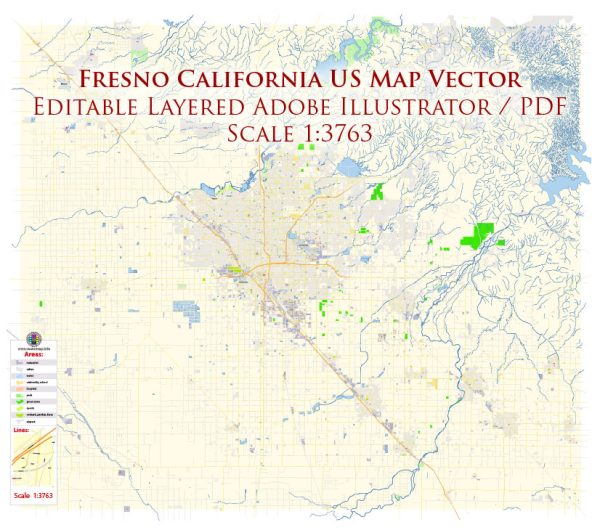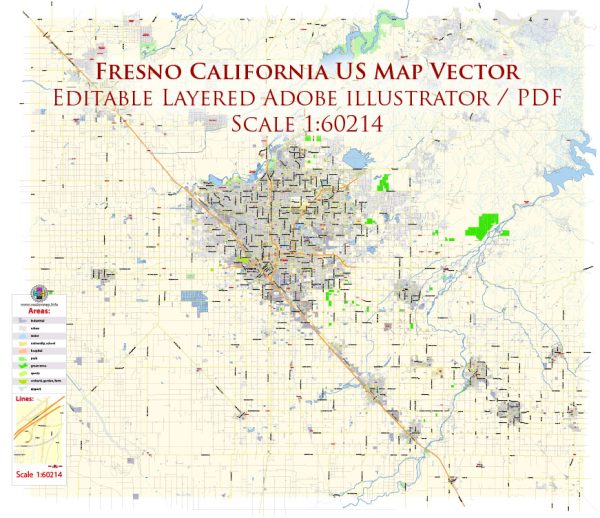Fresno, located in the heart of California’s Central Valley, has a rich history of urban development that reflects the broader trends and challenges faced by many American cities. The city’s growth and development can be traced through several key phases:
- Early Settlement and Agricultural Roots (19th Century):
- Fresno’s history dates back to the mid-19th century when the area was primarily agricultural and sparsely populated.
- The establishment of the Central Pacific Railroad in the 1870s played a crucial role in the city’s growth, facilitating transportation and boosting economic development.
- Agricultural Boom and Irrigation (Late 19th to Early 20th Century):
- The completion of the Friant Dam in 1942 allowed for effective irrigation of the surrounding farmland, transforming the region into one of the most productive agricultural areas in the United States.
- The agricultural boom attracted settlers, and Fresno became a hub for farming, with a focus on crops like grapes, figs, and citrus fruits.
- Expansion and Urbanization (Early to Mid-20th Century):
- The city’s population grew steadily throughout the early 20th century, with the development of infrastructure, including roads and schools.
- World War II brought about an economic boom, leading to increased urbanization and the development of suburban neighborhoods.
- Post-War Suburbanization (Mid to Late 20th Century):
- Like many American cities, Fresno experienced a post-war population boom, leading to the development of suburban communities and the expansion of the city’s footprint.
- The construction of the Dwight D. Eisenhower State Office Building in the 1960s marked a significant point in the city’s growth.
- Challenges and Revitalization (Late 20th Century to Present):
- Like many urban areas, Fresno faced challenges in the latter half of the 20th century, including issues related to crime, poverty, and urban decay.
- Efforts at revitalization have been ongoing, with projects aimed at beautifying the downtown area, promoting economic development, and improving infrastructure.
- Cultural and Economic Developments:
- Fresno has become a cultural hub with a thriving arts scene, including theaters, galleries, and museums.
- The city’s economy has diversified beyond agriculture, with the growth of industries such as healthcare, education, and technology.
- Modern Challenges and Future Prospects:
- Fresno, like many cities, faces challenges related to infrastructure, water resources, and managing urban sprawl.
- Ongoing efforts are being made to address these challenges, with a focus on sustainable development, transportation improvements, and community engagement.
Overall, Fresno’s history of urban development reflects the dynamic interplay between agriculture, transportation, and the changing economic landscape of California and the United States. The city continues to evolve, facing both challenges and opportunities in the 21st century.



 Author: Kirill Shrayber, Ph.D.
Author: Kirill Shrayber, Ph.D.